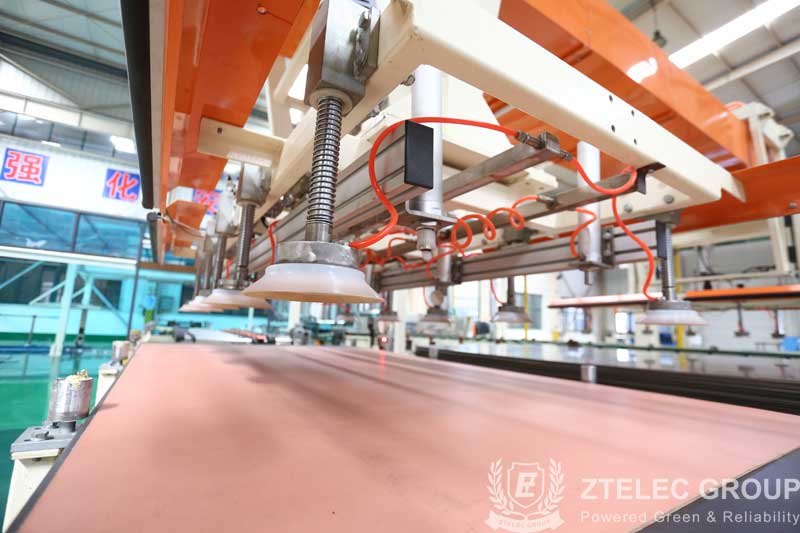The plate with chlorine (Cl), bromine (BR) content less than 0.09% Wt(weight ratio) is defined as a halogen-free plate.
1 Introduction
1.1 What is the halogen-free substrate?
According to JPCA-ES-01-2003 standard: the plate with chlorine (Cl), bromine (BR) content less than 0.09% Wt(weight ratio) is defined as a halogen-free plate. (At the same time, total Cl +Br ≤ 0.15% [1500PPM])
1.2 Why should halogen be banned?
Halogen refers to the halogen group of elements in the periodic table, including fluorine (F), chlorine (Cl), bromine (Br), and iodine (I). At present, the flame retardant base material, FR4, CEM-3, etc., flame retardant agent is mostly brominated epoxy resin. In brominated epoxy resin, tetrabromobisphenol A, polybrominated biphenyl, polybrominated biphenyl ether, polybrominated diphenyl ether are the main resistance fuel for copper clad plate, which is low cost and compatible with epoxy resin. However, the research of relevant institutions shows that when the halogen-containing flame retardant materials (polymerized polybrominated biphenyl (PBB) :Polybrominated diphenyl ether (PBDE) waste is caught on fire, it will emit dioxin (dioxin TCDD) and Benzfuran, etc., resulting in a large amount of smoke, unpleasant smell, high toxic gas, carcinogenic, unable to be discharged after ingestion, not environmental protection, and affecting human health. Therefore, the European Union initiated a ban on PBB and PBDE as flame retardants in electronic information products. The same document from China's Ministry of Information Industry (MII) requires that electronic information products put on the market should not contain lead, mercury, hexavalent chromium, polybrominated biphenyls or polybrominated biphenyls (PBDEs) from July 1, 2006.
The EU law prohibits the use of six substances such as PBB and PBDE. It is understood that PBB and PBDE are basically not used in the insulation board industry, and more bromine flame retardant materials other than PBB and PBDE are used, such as tetrabromo-bisphenol A, dibromo-phenol and so on. Its chemical formula is CishizoBr4. This type of copper cladding laminate with bromine as a flame retardant is not regulated by any laws and regulations. However, this type of copper cladding with bromine will release a large number of toxic gases (bromine type) and emit a large amount of smoke when burning or electrical fires. When the PCB is used for hot air conditioning and component welding, the plate is affected by high temperature (>200), and the trace amounts of hydrogen bromide will be released. Whether it will also produce dioxins is still under evaluation. Therefore, FR4 sheet containing tetrabromobisphenol A flame retardant is currently not prohibited by law and can be used, but cannot be called halogen-free sheet.

1.3 Principle of halogen-free substrate
At present, most of the halogen-free materials are mainly phosphorus and phosphorus - nitrogen systems. Phosphorus resin, when heated, will decomposes into polyphosphoric acid, which is highly dehydrating. It will make the surface of polymer resin to form a carbonized film, insulating resin combustion surface and air contact, so that the fire extinguished to achieve flame retardant effect. Polymer resins containing phosphorus and nitrogen compounds produce incombustible gas when burned to help the resin system flame retardant.
2 Characteristics of halogen-free plate
2.1 Insulation of halogen-free plate
As P or N is used to replace halogen atoms, the polarity of molecular bond segment of epoxy resin is reduced to a certain extent, thus improving the insulation resistance and resistance to penetration.
2.2 Water absorption of halogen-free sheet
Since the N and P in the nitrogen-phosphorus epoxy resin are less, the probability of forming hydrogen bonds with hydrogen atoms in water is lower than that of halogen materials, so the water absorption of the material is lower than that of conventional halogen flame retardant materials. For plates, low water absorption has a certain influence on improving the reliability and stability of materials.
2.3 Thermal stability of halogen-free board
The content of nitrogen and phosphorus in the halogen-free sheet is higher than that of the common halogen material, so the molecular weight and TG value of the monomer are increased. When heated, the kinetic capacity of its molecules will be lower than that of conventional epoxy resins, so the thermal expansion coefficient of halogen-free materials is relatively small.
2.4 Halogen-free welding resistance production
At present, there are many kinds of halogen-free soldering ink launched in the market. Its performance is not much different from ordinary liquid photosensitive ink in specific operation, which is basically similar to ordinary ink.
3 Conclusion
Due to the low water absorption rate and meeting the requirements of environmental protection, other properties can also meet the quality requirements of the board, therefore, the demand for halogen-free board has become more and more large;
In addition, major plate suppliers have invested more money in the research and development of halogen-free substrate and halogen-free PP. It is believed that in the near future, low-priced halogen-free board will be put into the market immediately. Therefore, each manufacturer should put the trial and use of halogen-free plate on the agenda, work out a detailed plan, and gradually expand the share of halogen-free plate in the factory, so that they can go ahead of the market demand.
If you are attractive to our products, please send us a message and we will contact you as soon as we receive it. Email: info@ztelecgroup.com Whatsapp: +8615716749170